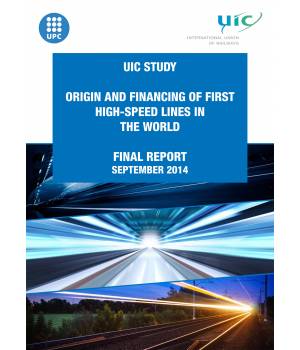
Origin and financing of first High-Speed lines in the World
On 1 October, 1964, the first commercially operated high-speed line in the world was opened between Tokyo and Osaka, with a length of 515 km. Since then, other countries in Europe such as France (1981-1983), Italy (1981-1992), Germany (1988-1991), Spain (1992), Belgium (1997), the United Kingdom (2003-2007) and Holland (2009) have joined the group of countries offering highspeed rail services. Similar cases exist in other countries such as China (2003), South Korea (2004-2010), Taiwan (2007) and Turkey (2009). Overall, at the present time and in accordance with the UIC (November 2013), there is a 7,378 km network in commercial service in Europe, and 13,732 in Asia. Within a few years, other countries like Morocco and Saudi Arabia will join the group of countries with high speed on some rail links. In this context, i.e. in celebrating the 50th anniversary of the birth of high-speed rail, the UIC, through its Department of High Speed and Intercity & High Speed Committee, considered it of interest to analyze the origin of the first high-speed lines in each country and, in parallel, the financing system adopted for their practical implementation.
This paper aims to respond, in a necessarily abridged form, to that interest.
| Author | UIC - High Speed Department |
| ISBN | 978-2-7461-2596-4 |
| Pages | 292 |
Fiche technique
- Langage
- Anglais
- Format
- Téléchargeable
- Edition
- Ed. no.1
- Date d'édition
- 01/09/2014
- Date de publication
- 20/03/2017
- Nombre de pages
- 292
- Thème
- Passenger High speed Finance Finances Grande Vitesse Voyageurs
- sku
- 5-17002E/PDF
- Reference
- 5-17002
 Préférences sur les cookies
Préférences sur les cookies

